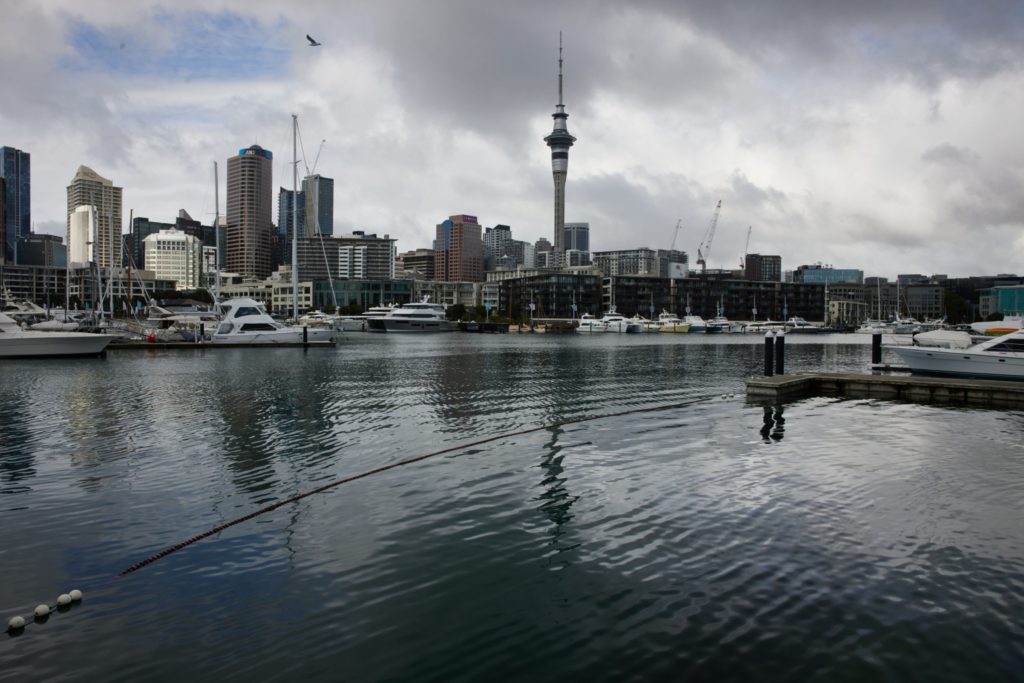(Bloomberg) — New Zealand inflation surged at the fastest pace in 10 years in the third quarter, reinforcing bets that the central bank will keep raising interest rates.
The currency rose and bond yields climbed to the highest level in almost three years after data showed the annual inflation rate jumped to 4.9% from 3.3% in the second quarter. Economists had forecast 4.2%. Consumer prices advanced 2.2% from three months earlier, Statistics New Zealand said Monday in Wellington, exceeding the 1.5% median estimate.
Policy makers worldwide are debating whether faster inflation is a temporary phenomenon linked to supply-chain disruptions during the pandemic or something more persistent. The Reserve Bank of New Zealand, which seeks to keep inflation around the midpoint of a 1-3% target band, raised its official cash rate on Oct. 6 and signaled more increases are coming.
That’s despite a coronavirus outbreak that has kept largest city Auckland in lockdown for two months, curbing economic growth.
“We can now see annual CPI inflation exceeding 5% by the end of this year,” said Mark Smith, senior economist at ASB Bank in Auckland. “The widespread nature of price increases seen today was not a comforting sign. If it were not for the delta variant outbreak, the pace of OCR hikes being implemented by the RBNZ would potentially be quicker than 25 basis point increments.”
Investors ratcheted up bets on further RBNZ rate hikes. Another increase is now fully priced in for the Nov. 24 policy decision and there’s a 50% chance the bank will deliver a 50 basis-point move, swaps data show.
The yield on New Zealand’s benchmark 10-year bond jumped 16 basis points after the inflation report to 2.43%, the highest since December 2018. The New Zealand dollar rose before retracing to buy 70.69 U.S. cents at 5:40 p.m. in Wellington, little changed on the day.
What Bloomberg Economics Says
“While we think the CPI data increases the likelihood that the RBNZ increases rates in November, the virus outbreak and lockdown may see a downward adjustment in the central bank’s aggressive rate hike projections.”
— James McIntyre, economist.
The annual inflation rate is the highest since 2011, when prices were boosted by an increase in the goods and services tax in late 2010.
Statistics New Zealand said the 2.2% quarterly gain was the biggest since the fourth quarter of 2010. If the periods impacted by the GST increase were excluded, it was the biggest move since 1987, the agency said.
Price rises were widespread, with 10 of the 11 main groups in the consumers price index basket increasing in the quarter. The main drivers were housing-related costs, such as construction of new homes and local authority rates, the statistics agency said.
Other Details
Prices for construction of new houses were up 4.5% for the quarter and 12% for the year
Gasoline prices rose 6.5% in the quarter and 22% for the year
Food prices rose 2.7% in the quarter
Tradables prices rose 2.8% from the previous quarter and 5.7% for the year
Non-tradable prices, which are less influenced by the currency, increased 1.8% from the previous quarter
Non-tradables prices rose 4.5% from a year earlier
(Updates market reaction in seventh paragraph)
More stories like this are available on bloomberg.com
©2021 Bloomberg L.P.











